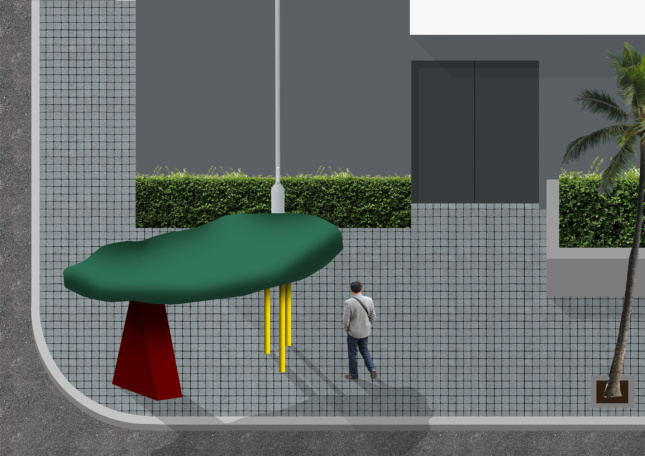A most unusual object has recently been installed on a street corner of the former Yantian port district of Shenzhen, China, that may at first appear to be a peace offering from an alien race. Designed by the London-based architecture firm Sam Jacob Studio (SJS), the Yantian Dolmen is a part of a family of urban furniture elements that blur the distinction between art and design.
The Yantian Dolmen was commissioned for the Bi-City Biennale of Urbanism\Architecture of Shenzhen and Hong Kong (UABB 2019) and responds to the year’s theme of “Urban Interactions” by inspiring curiosity and social engagement in its appropriation. The piece was designed in a nod to the dolmen, a type of megalithic tomb structure developed in the early Neolithic period over five thousand years ago. Much as how present-day archaeologists continue to question the role they served during the Stone Age, the Yantian Dolmen is a willfully unconventional street furniture piece with a range of uses limited only by the public imagination. Because its role and meaning might therefore change over time, Sam Jacob, founder of SJS, described the piece in a statement as a “social sculpture” whose use always remains provisional rather than fixed, and on his Instagram as a “municipal dolmen/shelter/porch structure.”

“In the dolmen,” Jacob wrote in a statement, “elements of Neolithic monument merge with everyday contemporary shelters to create a more ambiguous formal arrangement.” Two abstracted triangular blocks and two steel tubes recalling urban hazard equipment hold up a massive chunk of ‘stone’ to create an overall form that appears both impossibly heavy and partially airborne.
The Yantian Dolmen is the latest in a series of projects SJS is producing that combines elements of ancient and contemporary cultures, including the MK Menhir, a 1:1 replica of an Avebury standing stone on a porte cochère northwest of England, a replica of a clay beaker found at a Middle Bronze Age burial site fabricated using contemporary fabrication tools, and the Archaeographic House, a design proposal hybridizing the 4,000-year-old dwelling of Skara Brae on Orkney, Scotland, with the Alison and Peter Smithson’s House of the Future designed in 1956.
A dolmen-inspired accessory dwelling unit designed by Anna Neimark was also recently on view at the Southern California Institute of Architecture (SCI-Arc) that, much like the Yantian Dolmen, recalls “the architecture of forgotten narratives, eroded tectonics, and muddled grammar.”











